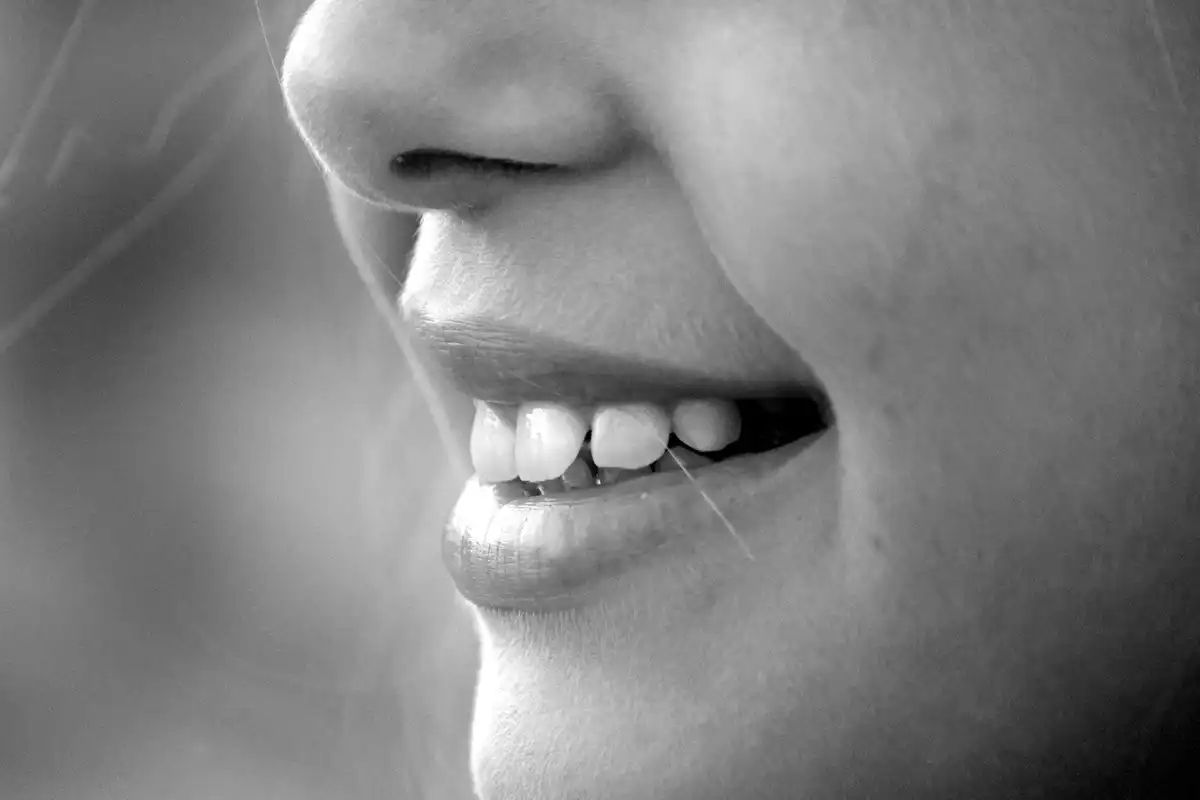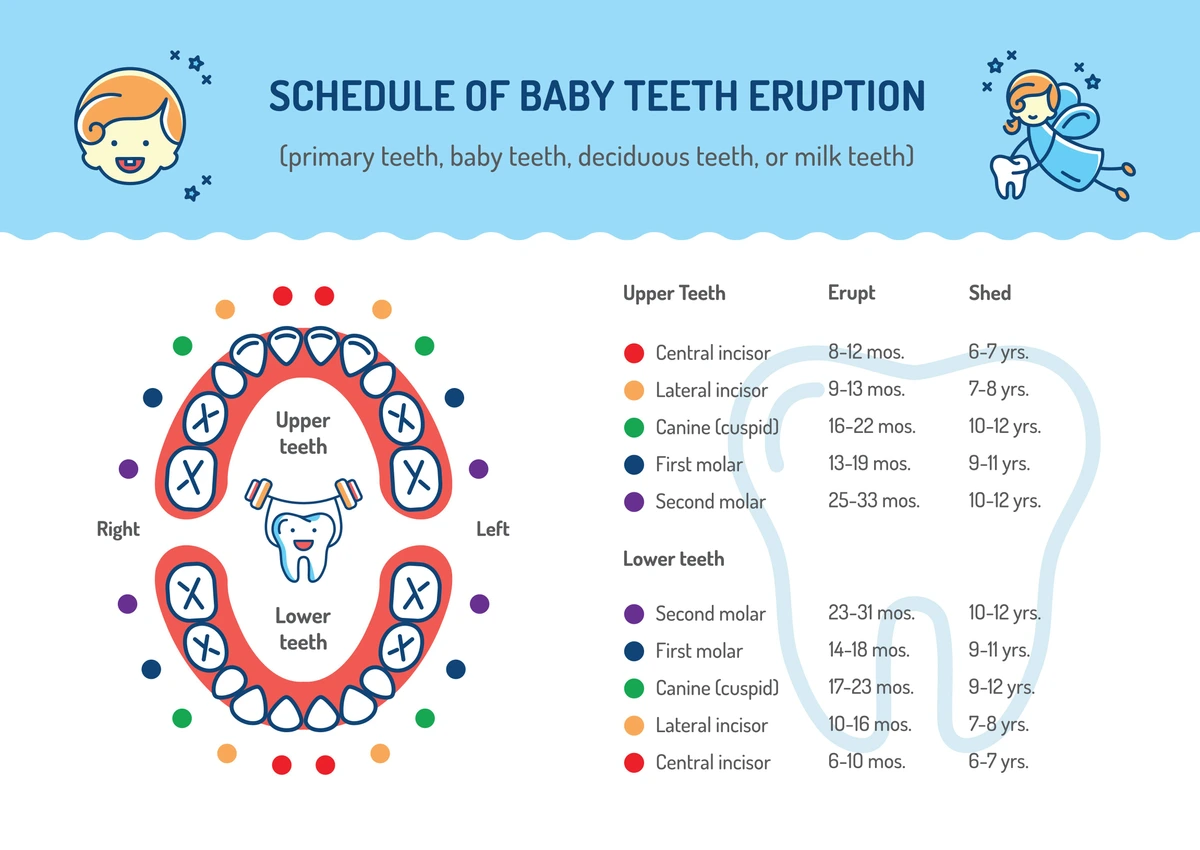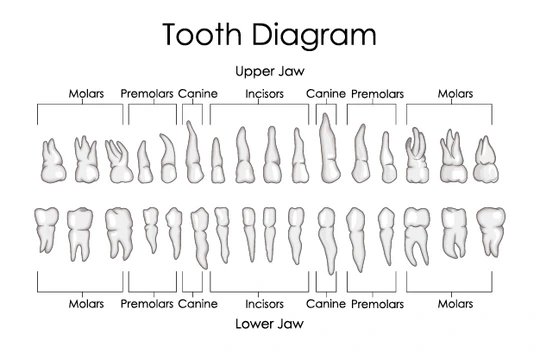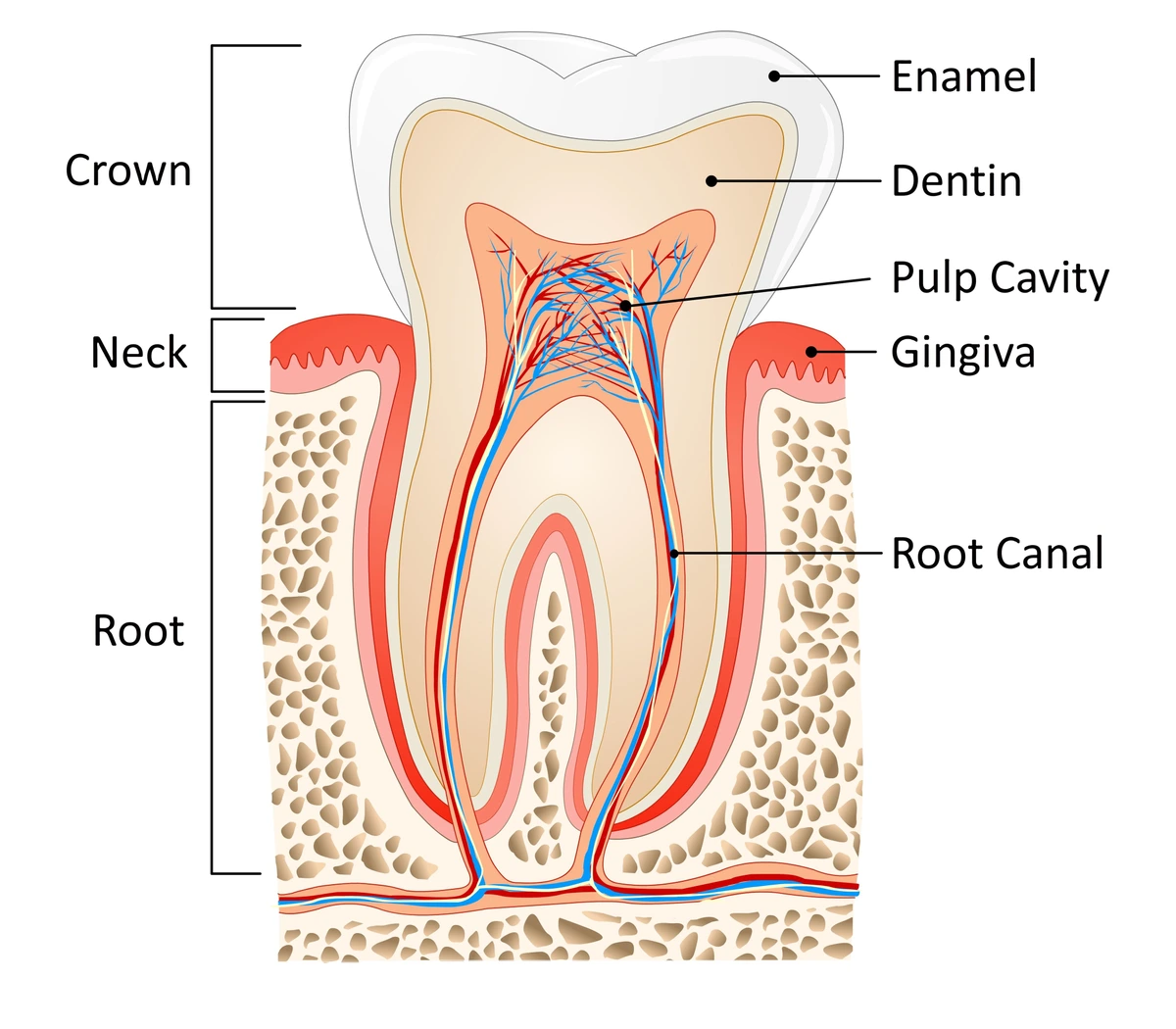How Many Teeth Do Humans Have? Kids vs. Adults Teeth


There’s a lot you can learn by looking at someone’s teeth. For starters, the number of teeth a person has (and which ones are there) can tell how old a child or young adult is. In the animal world, farmers even use teeth to tell how old a horse is! But when it comes to humans, how many teeth do we have: 20 and 32. But sometimes, people have fewer or extra teeth than what nature intended!
How Many Teeth Do Babies Have?
Most babies are born without any teeth. But sometimes “milk teeth” are present at birth. These supernumerary (that’s our fancy term for “extra”) baby teeth are not part of your child’s typical smile makeup. Usually, milk teeth are extracted because they interfere with feeding.

As your child starts getting their first baby tooth some 6-12 months later, they’ll consistently have new teeth start erupting until all 20 primary teeth (baby teeth) finally come in. At that point, there will be a few years where nothing happens. But deep under their gums, their permanent adult teeth are already forming!
Baby teeth toddlers and preschoolers have:
- 8 incisors (pointed teeth)
- 4 canines
- 8 molars
When Do Molars Erupt
Molars are the last adult teeth erupt around the age of 9 to12 years old.
How Many Permanent Teeth Do Adults Have?
Once the deciduous teeth (baby teeth) start falling out, they’re replaced with permanent ones. Most children get their first adult tooth by the time they’re in kindergarten or first grade. Boys tend to get theirs later than girls.
There are 32 permanent adult teeth that form. The last set to develop and erupt are the third molars – or wisdom teeth – which may continue growing until someone is as old as 30! At that point, there are no more adult teeth to come in.
Out of those 32 adult teeth, there are:
- 8 incisors
- 4 canines (cuspids, or “eye teeth”)
- 8 bicuspids (premolars)
- 12 molars
When Do Wisdom Teeth Come In?
Wisdom teeth or “third molars” are the last set of molars (aka back teeth) that we get in our mouths. Although most of us have all of our permanent teeth in by the time we’re 12 or 13 years old, wisdom teeth tend to not come in until our body is almost completely physically developed. In fact, they’re usually still growing well into our 20s and the four wisdom teeth may not fully erupt until someone is close to being 30 years old.
Should You Have Your Wisdom Teeth Removed?
One of the major reasons to need an extraction is because there isn’t room for your wisdom teeth. Impacted third molars occur when there are more teeth than mouth, so to speak. When the space behind your second (12 year) molars isn’t wide enough to let the wisdom teeth through, they’ll often get caught up inside of the jaw.
Or, your wisdom teeth grow at an angle and get stuck against the second molars. When that happens, your healthy teeth can become damaged, develop cavities, be more prone to gum disease, or even die (intense I know!) In an everyday scenario, your dentist will probably want to help you retain the health and integrity of your second molars over your wisdom teeth. Impacted third molars are best off removed before they interfere with your overall oral health.
Teeth Diagram

The incisors are the flat front teeth used for cutting and biting into things. Then when you go back a bit further, you see the sharper canine teeth, which are designed for tearing or ripping. Past those are the premolars, which help tear food but are also used for grinding and breaking down our meals. Then the last teeth are the molars, which offer wide chewing surfaces to finish preparing food for the beginning phases of digestion.
However, there are always exceptions to the rule of how many teeth do humans have. We already mentioned supernumerary teeth; the most common parts of the mouth to see extra teeth are between the two front teeth or behind the wisdom teeth. Chances are that extra teeth are a genetic condition that people inherit from their parents.
On the other hand, some people find that they’re missing teeth and never have the full set of 32. The upper lateral incisors (the second teeth from the center) and wisdom teeth are the most common sets of teeth to not form. Again, this is usually a hereditary condition.
Layers Of The Tooth

Tooth Enamel
The tops of teeth are covered by enamel, which is the hardest substance you’ll find in the entire human body. It tapers off around the neck of the tooth, which is right at the gumlines. It’s enamel’s role to provide strength and force for biting and chewing, plus protect the inside structures of the tooth.
Dentin Layer
Just under the enamel is a layer of dentin. Dentin is not nearly as strong as enamel. It’s also more sensitive because of the multiple nerve endings that spread throughout this layer. If dentin is exposed for any reason – such as tooth decay or gum recession – it can cause severe sensitivity or pain.
Pulp
The innermost layer of the tooth is the pulp or nerve. These tissues provide the blood supply your tooth needs to stay alive. If you ever develop an abscess, it’s because the pulp is infected or dying.
Cementum
There’s also a bonus tooth layer that only covers the root surfaces, called cementum. The cementum offers a foundation for tiny fibers to attach the tooth to the bone and gum tissues around it.
Proper Care Of Your Teeth
Great oral hygiene can help you keep your natural teeth for life. But even though tooth enamel is strong, it’s not indestructible. A good oral health care routine can also help prevent gingivitis and periodontal disease. You’ll need to brush and floss daily, use fluoride regularly, and schedule a cleaning with your hygienist at least twice a year.
Proper Brushing Care
- Angling your toothbrush toward the gums and cleaning the gumlines around every single tooth. 45-degrees is best, so that your bristles are slightly angled into the “sulcus” or gum pocket.
- Brushing long enough. Set a timer for two minutes, minimum. Focus on making small strokes on just one or two teeth at a time.
- Brushing at least two if not three times per day. If you’re at work, keep an extra brush in your desk and use tap water if you want. Just make sure that you’re physically moving that plaque off of your teeth.
- Possibly invest in an electronic brush, since they vibrate thousands of times per second and can remove way more plaque. Just remember that you get what you pay for. A super cheap battery-powered brush might have hard bristles and be too abrasive.
Flossing Teeth Properly
- Floss between every tooth in your entire mouth at least once a day. Wrap it around the tooth in a “C” shape, then slide it up and down several times even getting under the gums. Be sure to lift it up over your gums before you move to the adjacent tooth.
- If you can’t floss, consider getting a water flosser instead. Water flossers shoot a steady stream of H2O to flush out hard-to-reach areas. They’re perfect if you have a bridge, retainer, or something else that you can’t always get floss under.
- Don’t substitute other things like mouthwash for flossing. You need to physically get in there and clean the plaque out from under the edges of your gums.
How many teeth do humans have? The number of teeth depends on a few things! If you have good oral health and take care of your smile, you could enjoy all 32 (or 28, if your wisdom teeth are extracted) for several years to come.

Make your inbox smile!
Subscribe






